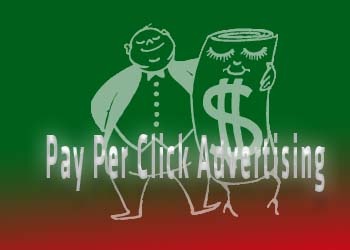The hardest part of writing is the first sentence. When you look at the whole project, it seems like an impossible task. That's why you have to break it down into manageable tasks. Think of climbing a mountain. You are standing at the foot of it and looking up at its summit vanishing into the clouds. How can you possibly scale such an immense and dangerous mountain?
There is only one way to climb a mountain ? step by step.
Now think of writing your ebook in the same light. You must create it step by step, and one day, you will take that last step and find yourself standing on the summit with your head in the clouds.
The first thing you have to do, as if you actually were a mountain climber, is to get organized. Instead of climbing gear, however, you must organize your thoughts. There are some steps you should take before you begin. Once you've gone through the following list, you will be ready to actually begin writing your ebook.
Beginning Steps to Writing an ebook First, figure out your ebook's working title. Jot down a few different titles, and eventually, you'll find that one that will grow on you. Titles help you to focus your writing on your topic; they guide you in anticipating and answering your reader's queries. Many non-fiction books also have subtitles. Aim for clarity in your titles, but cleverness always helps to sell books ? as long as it's not too cute. For example, Remedies for Insomnia: twenty different ways to count sheep. Or: Get off that couch: fifteen exercise plans to whip you into shape.
Next, write out a thesis statement. Your thesis is a sentence or two stating exactly what problem you areaddressing and how your book will solve that problem. All chapters spring forth from your thesis statement. Once you've got your thesis statement fine-tuned, you've built your foundation. From that foundation, your book will grow, chapter by chapter.
Your thesis will keep you focused while you write your ebook. Remember: all chapters must support your thesis statement. If they don't, they don't belong in your book. For example, your thesis statement could read: We've all experienced insomnia at times in our lives, but there are twenty proven techniques and methods to give you back a good night's sleep.
Once you have your thesis, before you start to write, make sure there is a good reason to write your book. Ask yourself some questions:
* Does your book present useful information and is that information currently relevant?
* Will you book positively affect the lives of your readers?
* Is your book dynamic and will it keep the reader's attention?
* Does you book answer questions that are meaningful and significant?
If you can answer yes to these questions, you can feel confident about the potential of your ebook.
Another important step is to figure out who your target audience is. It is this group of people you
will be writing to, and this group will dictate many elements of your book, such as style, tone, diction,and even length. Figure out the age range of your readers, their general gender, what they are most interested in, and even the socio-economic group they primarily come from. Are they people who read fashion magazines or book reviews? Do they write letters in longhand or spend hours every day online. The more you can pin down your target audience, the easier it will be to write your book for them.
Next, make a list of the reasons you are writing your ebook. Do you want to promote your business? Do you want to bring quality traffic to your website? Do you want to enhance your reputation?
Then write down your goals in terms of publishing. Do you want to sell it as a product on your website, or do you want to offer it as a free gift for filling out a survey or for ordering a product? Do you want to use the chapters to create an e-course, or use your ebook to attract affiliates around the world? The more you know upfront, the easier the actual writing will be.
Decide on the format of your chapters. In non-fiction, keep the format from chapter to chapter fairly consistent. Perhaps you plan to use an introduction to your chapter topic, and then divide it into four subhead topics. Or you may plan to divide it into five parts, each one beginning with a relevant anecdote.
How to make your ebook "user friendly" You must figure out how to keep your writing engaging.Often anecdotes, testimonials, little stories, photos, graphs, advice, and tips will keep the reader turning the pages. Sidebars are useful for quick, accessible information, and they break up the density of the page.
Write with a casual, conversational tone rather than a formal tone such as textbook diction. Reader's respond to the feeling that you are having a conversation with them. Break up the length and structure of your sentences so you don?t hypnotize your readers into sleep. Sentences that are all the same length and structure tend to be a good aid for insomnia!
Good writing takes practice. It takes lots and lots of practice. Make a schedule to write at least a page aday. Read books and magazines about the process of writing, and jot down tips that jump out at you. The art of writing is a lifetime process; the more you write (and read), the better your writing will become. The better your writing becomes, the bigger your sales figures.
In an ebook that is read on the screen, be aware that you must give your reader's eye a break. You can do this by utilizing white space. In art classes, white space is usually referred to as "negative space." Reader's eyes need to rest in the cool white oasises you create on your page. If your page is too dense, your reader will quit out of it as soon as their eyes begin to tear.
Make use of lists, both bulleted and numbered. This makes your information easy to absorb, and gives the reader a mental break from dissecting your paragraphs one after the other.
Finally, decide on an easy-to-read design. Find a font that's easy on the eyes, and stick to that font family. Using dozens of fonts will only tire your readers out before they've gotten past your introduction. Use at least one and a half line spacing, and text large enough to be read easily on the screen, but small enough so that the whole page can be seen on a computer screen. You will have to experiment with this to find the right combination Of course, don't forget to run a spell and grammar check. You are judged by something as minor as correct punctuation, so don?t mess up a great book by tossing out semicolons randomly, or stringing sentences together with commas. (By the way, that's called a "comma splice.")
Last of all, create an index and a bibliography.That's it! You've written a book! Now all you have to do is publish your ebook online, and wait for download request from your website visitors.







